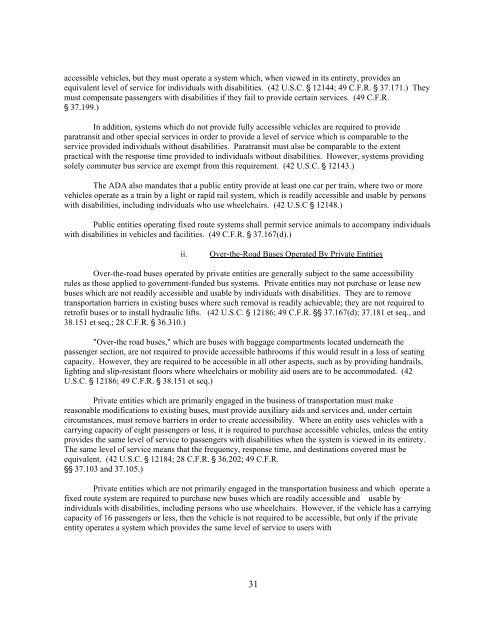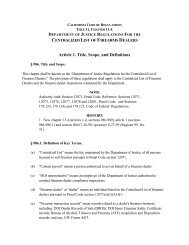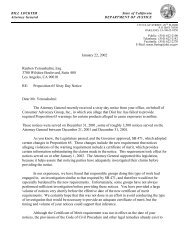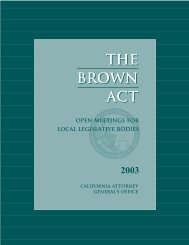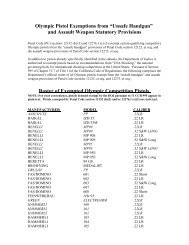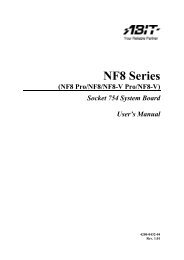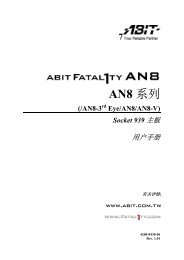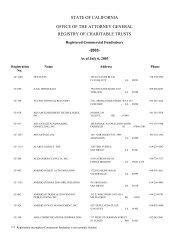Legal Rights of Persons With Disabilities - Ossh.com
Legal Rights of Persons With Disabilities - Ossh.com
Legal Rights of Persons With Disabilities - Ossh.com
You also want an ePaper? Increase the reach of your titles
YUMPU automatically turns print PDFs into web optimized ePapers that Google loves.
accessible vehicles, but they must operate a system which, when viewed in its entirety, provides an<br />
equivalent level <strong>of</strong> service for individuals with disabilities. (42 U.S.C. ' 12144; 49 C.F.R. ' 37.171.) They<br />
must <strong>com</strong>pensate passengers with disabilities if they fail to provide certain services. (49 C.F.R.<br />
' 37.199.)<br />
In addition, systems which do not provide fully accessible vehicles are required to provide<br />
paratransit and other special services in order to provide a level <strong>of</strong> service which is <strong>com</strong>parable to the<br />
service provided individuals without disabilities. Paratransit must also be <strong>com</strong>parable to the extent<br />
practical with the response time provided to individuals without disabilities. However, systems providing<br />
solely <strong>com</strong>muter bus service are exempt from this requirement. (42 U.S.C. ' 12143.)<br />
The ADA also mandates that a public entity provide at least one car per train, where two or more<br />
vehicles operate as a train by a light or rapid rail system, which is readily accessible and usable by persons<br />
with disabilities, including individuals who use wheelchairs. (42 U.S.C ' 12148.)<br />
Public entities operating fixed route systems shall permit service animals to ac<strong>com</strong>pany individuals<br />
with disabilities in vehicles and facilities. (49 C.F.R. ' 37.167(d).)<br />
ii.<br />
Over-the-Road Buses Operated By Private Entities<br />
Over-the-road buses operated by private entities are generally subject to the same accessibility<br />
rules as those applied to government-funded bus systems. Private entities may not purchase or lease new<br />
buses which are not readily accessible and usable by individuals with disabilities. They are to remove<br />
transportation barriers in existing buses where such removal is readily achievable; they are not required to<br />
retr<strong>of</strong>it buses or to install hydraulic lifts. (42 U.S.C. ' 12186; 49 C.F.R. '' 37.167(d); 37.181 et seq., and<br />
38.151 et seq.; 28 C.F.R. ' 36.310.)<br />
"Over-the road buses," which are buses with baggage <strong>com</strong>partments located underneath the<br />
passenger section, are not required to provide accessible bathrooms if this would result in a loss <strong>of</strong> seating<br />
capacity. However, they are required to be accessible in all other aspects, such as by providing handrails,<br />
lighting and slip-resistant floors where wheelchairs or mobility aid users are to be ac<strong>com</strong>modated. (42<br />
U.S.C. ' 12186; 49 C.F.R. ' 38.151 et seq.)<br />
Private entities which are primarily engaged in the business <strong>of</strong> transportation must make<br />
reasonable modifications to existing buses, must provide auxiliary aids and services and, under certain<br />
circumstances, must remove barriers in order to create accessibility. Where an entity uses vehicles with a<br />
carrying capacity <strong>of</strong> eight passengers or less, it is required to purchase accessible vehicles, unless the entity<br />
provides the same level <strong>of</strong> service to passengers with disabilities when the system is viewed in its entirety.<br />
The same level <strong>of</strong> service means that the frequency, response time, and destinations covered must be<br />
equivalent. (42 U.S.C. ' 12184; 28 C.F.R. ' 36.202; 49 C.F.R.<br />
'' 37.103 and 37.105.)<br />
Private entities which are not primarily engaged in the transportation business and which operate a<br />
fixed route system are required to purchase new buses which are readily accessible and usable by<br />
individuals with disabilities, including persons who use wheelchairs. However, if the vehicle has a carrying<br />
capacity <strong>of</strong> 16 passengers or less, then the vehicle is not required to be accessible, but only if the private<br />
entity operates a system which provides the same level <strong>of</strong> service to users with<br />
31


